I’m not sure if it interests anyone (or even if anyone is out there) but here are a few random photos of Gazan civic works…how they keep things functioning with very little to work with. 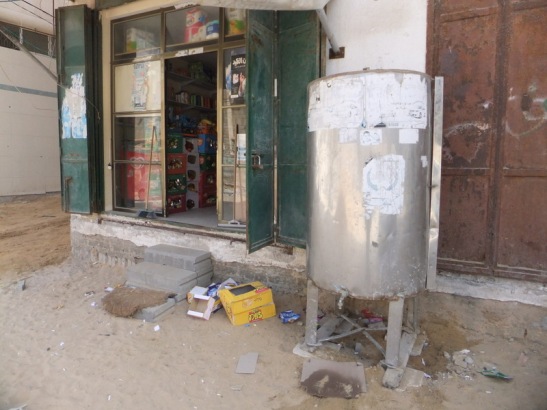 The drinking water that comes out of all Gazan water taps is as salty as sea water. Gaza’s ground water aquifer was once replenished from the Hebron hills in the West Bank. But I’m told that Israeli farm water wells have now cut off and hijacked this water, allowing sea water to infiltrate the Gaza aquifer. So Gazan tap water is only “good” for washing and bathing and that is only because there is no other choice. Don’t expect any suds from this water, no matter how much soap you use! Drinking water is produced by the government, via a reverse osmosis plant and trucked to thousands of locally made stainless steel tanks, like the one in the above photo, and sold for one shekel (25 cents CAN.) for 20 liters. Yes, due to Israels’ blockade, and so control of the economy, Gazans’ are forced to use Israeli shekels, whether they like it or not.
The drinking water that comes out of all Gazan water taps is as salty as sea water. Gaza’s ground water aquifer was once replenished from the Hebron hills in the West Bank. But I’m told that Israeli farm water wells have now cut off and hijacked this water, allowing sea water to infiltrate the Gaza aquifer. So Gazan tap water is only “good” for washing and bathing and that is only because there is no other choice. Don’t expect any suds from this water, no matter how much soap you use! Drinking water is produced by the government, via a reverse osmosis plant and trucked to thousands of locally made stainless steel tanks, like the one in the above photo, and sold for one shekel (25 cents CAN.) for 20 liters. Yes, due to Israels’ blockade, and so control of the economy, Gazans’ are forced to use Israeli shekels, whether they like it or not. 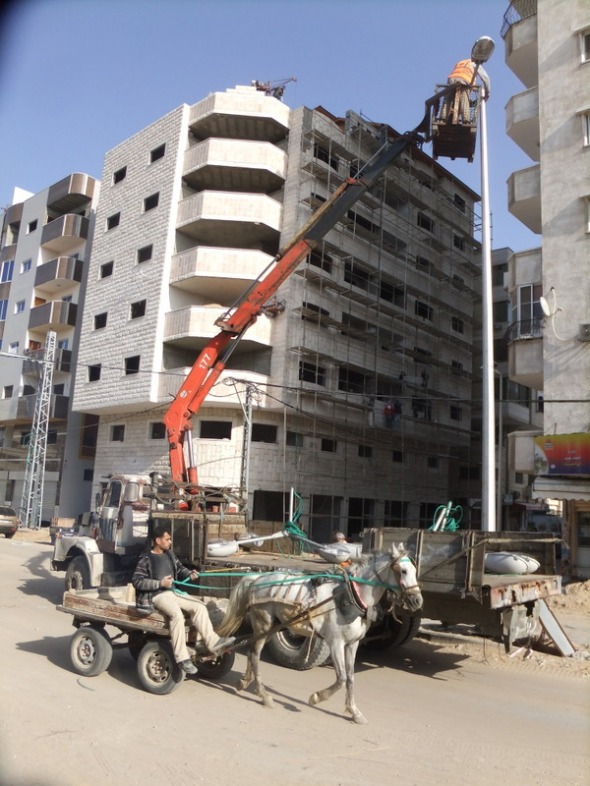 Even with the limited electricity supplies, 8 to 12 hours a day, Gaza City is planning for better days ahead and is new installing street lights. And the horse cart is a necessary and efficient delivery and pick up system all over Gaza, from people, to produce, to building materials and everything in between. And in the background is more construction to replace the destruction from 2008/09 and last November. I witnessed some construction materials coming across the Egyptian border, but I’m told the vast majority of it still has to come through the very expensive, and dangerous, tunnels from Egypt.
Even with the limited electricity supplies, 8 to 12 hours a day, Gaza City is planning for better days ahead and is new installing street lights. And the horse cart is a necessary and efficient delivery and pick up system all over Gaza, from people, to produce, to building materials and everything in between. And in the background is more construction to replace the destruction from 2008/09 and last November. I witnessed some construction materials coming across the Egyptian border, but I’m told the vast majority of it still has to come through the very expensive, and dangerous, tunnels from Egypt. 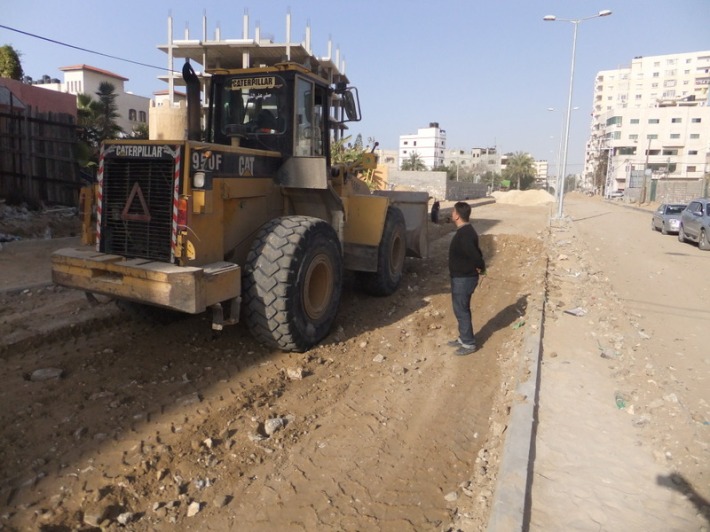 Caterpillar is being boycotted in the “West”, due to their supplying armoured bulldozers to the IDF, but the Gazan’s have to use what they have as best they can, ala the photo above. Even if you wanted to, you can’t smuggle a replacement Komatsu dozer through a Rafah tunnel. Road construction is a little different in sandy Gaza. Once the loose sandy ground has been prepared and compacted by heavy equipment, locally made concrete paving stones are laid. From my own experience with asphalt pavement breaking apart on the sandy soil in Port Renfrew B.C., paving stones are an excellent idea. Much less oil is used, it takes lower technology, it’s labour intensive, there’s no heavy equipment needed after the initial prep, they’re reusable, road repairs are easy and locally done, accessing water and sewer mains is simple and inexpensive and the “cobble” roads look beautiful.
Caterpillar is being boycotted in the “West”, due to their supplying armoured bulldozers to the IDF, but the Gazan’s have to use what they have as best they can, ala the photo above. Even if you wanted to, you can’t smuggle a replacement Komatsu dozer through a Rafah tunnel. Road construction is a little different in sandy Gaza. Once the loose sandy ground has been prepared and compacted by heavy equipment, locally made concrete paving stones are laid. From my own experience with asphalt pavement breaking apart on the sandy soil in Port Renfrew B.C., paving stones are an excellent idea. Much less oil is used, it takes lower technology, it’s labour intensive, there’s no heavy equipment needed after the initial prep, they’re reusable, road repairs are easy and locally done, accessing water and sewer mains is simple and inexpensive and the “cobble” roads look beautiful. 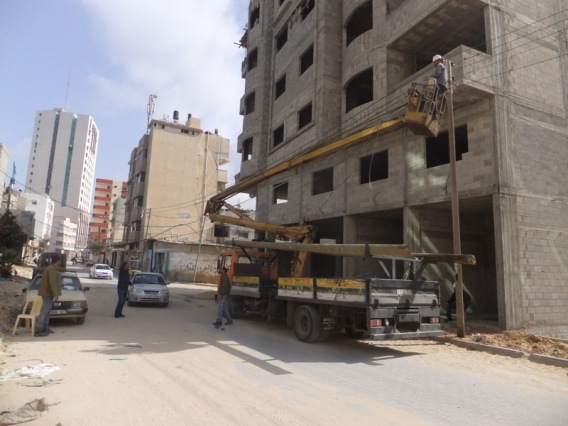 Needless to say a hydro worker using an uninsulated boom truck in Canada would be the ultimate no-no, but in Gaza they do what they have to do, with what they have. Mind you perhaps they time the hydro repairs for when the power is cut off anyways due to Israel’s rationing of Gaza’s fuel supply.
Needless to say a hydro worker using an uninsulated boom truck in Canada would be the ultimate no-no, but in Gaza they do what they have to do, with what they have. Mind you perhaps they time the hydro repairs for when the power is cut off anyways due to Israel’s rationing of Gaza’s fuel supply.
A Palestinian prisoner, Arafat Shalesh Jaradat, died yesterday during Israeli interrogation. Today I joined a march and carried a Palestinian flag in his memory and I spoke to many local people about him, including one of his relatives. I do know that many other activists are blogging about Arafat’s death, so I decided to use my limited blog time to talk of other things. But here is one photo from his memorial march. 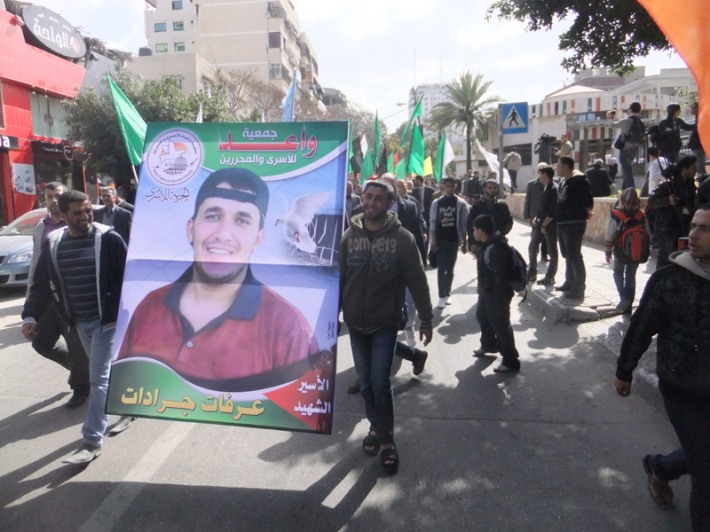 Goodnight from Gaza.
Goodnight from Gaza.




Posted by uma sims on February 24, 2013 at 3:10 pm
Hi Kevin, Just a short note to say I’ve been following your blogs and am very interested indeed in everything you have to say from Gaza, please keep it up for those of us who can’t get there but want all the details as they help to humanise it all. Best, Uma cardiffpsc.weebly.com facebook.com/cardiffpsc
Posted by Colin Smith on February 24, 2013 at 4:34 pm
Your posts are fabulous, Kevin. Big audience out here. Stay Safe Colin
On 24 Feb 2013, at 20:20, Kevin Neish <comment-reply@wordpress.com> wrote: